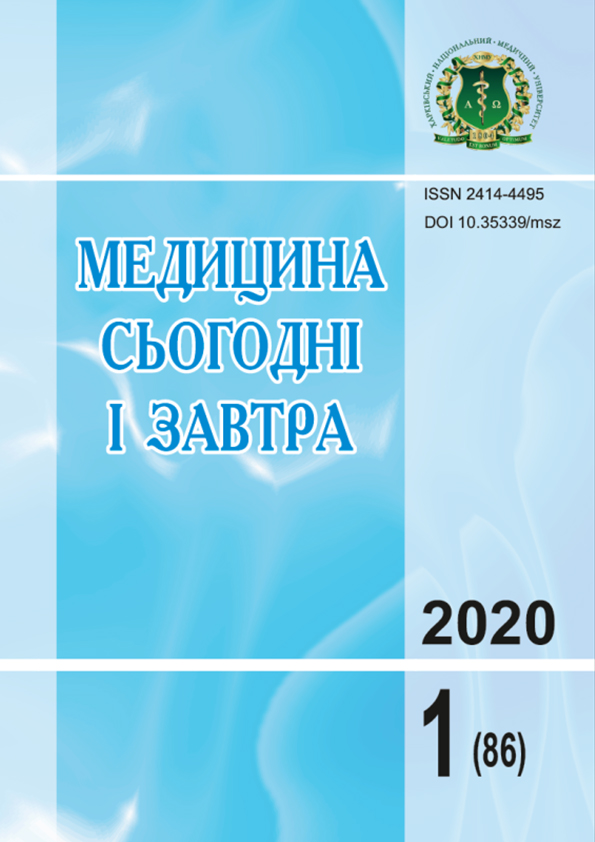Abstract
The prevalence of dysfunction of the temporomandibular joint, especially in people aged 18-60 years, reached 95-98 % among all dental applications. The course of the pathology is usually hidden, with periodic recurrences and has a long nature, which is accompanied by a decrease in overall quality of life.
Treatment of this pathology of the temporomandibular joint is a set of complex therapeutic, orthopedic and psychological measures. The literature describes many ways to treat temporomandibular joint dysfunction, one of the modem ones is the use of occlusal splints, which allow to change the position of the mandible, diagnose and eliminate musculoskeletal dysfunction of the temporomandibular joint. The aim of the study was to determine the effectiveness of treatment of musculoskeletal dysfunction of the temporomandibular joint with occlusal splints according to axiography. 274 patients aged 18 to 65 years were diagnosed with temporomandibular joint pain syndrome before and after treatment. All patients with signs of temporomandibular joint dysfunction before treatment had a violation of the trajectory of the mandible (deviation is 68.7 %, dyslexia is 31.3 %). When opening and closing the mouth, asymmetrical shifts of the lower jaw to the sides of more than 2 mm (deviation from the midline is more than 2 mm) were observed. After treatment with occlusal splints there was an improvement in the trajectory of opening and closing the mouth: the number of patients with a violation of the trajectory decreased by 89.1 %, and the displacement of the mandible during opening and closing the mouth in 92.4 % of patients decreased on average to 0.9 mm. When analyzing the movements of the mandible in the sagittal plane in 79 % of cases, deviations of the trajectory of the mandible were detected. After treatment with occlusive muscle relaxation splints, elimination of violations of the trajectory of the mandible in the transverse plane was noted in 93.4 % of cases, reduction of displacement to 0.9 mm in 78.1 % of patients. The trajectory of the mandible in the sagittal plane improved in 80.1 % of patients, normalization of the position of the mandible relative to the neuromuscular trajectory was achieved in 93.4 % of clinical cases. According to the analysis of parameters, such treatment should be considered effective.
Keywords: musculoskeletal dysfunction, temporomandibular joint, clinical dysfunction index, axiography, sagittal articular pathway angle, sagittal incisor pathway angle, Bennett’s angle (movement), duration.
References
Kroshka, D. V, Dolhalev, A. A., Brahin, E. A., Yahmurov, M. A. (2017). Analiz rezultatov shinoterapii pri lechenii patsiientov s disfunktsiiei visochno-nizhnecheliustnoho sustava і zhevatelnykh myshts po dannym elektronnoi hnatohrafii [Analysis of the results of shinotherapy in the treatment of patients with dysfunction of the temporomandibular joint and masticatory muscles according to electronic gnatography]. Meditsinskii vestnik Severnoho Kavkaza — Medical Bulletin of the North Caucasus, 12(1), 65-68. DOI: 10.14300/mnnc.2017.12019 [in Russian].
Slavicek, M., Slavicek, R. (2002). The masticatory organ: functions and dysfunctions. Klosterneuburg: Gamma Med. Fortbildung, 544 p.
Suenaga, S., Nagayama, K., Nagasawa, T., Indo, H., Majima, H. J. (2016). The usefulness of diagnostic imaging for the assessment of pain symptoms in temporomandibular disorders. Japanese Dental Science Review, 52(4), 93-106. DOI: 10.1016/j.jdsr.2016.04.004. PMID: 28408961. PMCID: PMC5390340.
Naidanova, I. S., Pisarevskii, Yu. L., Shapovalov, A. H., Pisarevskii, I. Yu. (2018). Vozmozhnosti sovremennykh tekhnolohii v diahnostike funktsionalnykh narushenii visochno-nizhnecheliustnoho sustava (obzor literatury) [Possibilities of modem technologies in the diagnosis of functional disorders of the temporomandibular joint (literature review)]. Problemy stomatolohii - Actual Problems in Dentistry, 14(4), 6-13. DOI: 10.18481/2077-7566-2018-14-4-6-13 [in Russian].
Voronina, Ye. A., Nuriieva, N. S., Vasiliev, Yu. S., Delets, A. V (2018). Dislokatsii diska VNCHS kak sledstviie bokovoho smeshcheniia nizhnei cheliusti [Dislocations of the TMJ disk as a result of lateral displacement of the lower jaw], Problemy stomatolohii -Actual Problems in Dentistry, 14(4), 98-103. DOI: 10.18481/2077-7566-2018-14-4-98-103 [in Russian].
Zhulev Ye.N., Yershov P.E., Yershova O.A. (2017). Topohraficheskaia anatomiia holovok nizhnei cheliusti u patsiientov s myshechno-sustavnoi disfunktsiiei visochno-nizhnecheliustnoho sustava і anomaliiami prikusa [Topographic anatomy of the lower jaw heads in patients with muscle-joint dysfunction of the temporomandibular joint and malocclusion abnormalities], Viatskii meditsinskii vestnik - Vyatka Medical Bulletin, 3(55), 96-99 [in Russian].
Schiffman, E., Ohrbach, R., Truelove, E., Look, J., Anderson, G., Goulet, J. R., Svensson, R. (2014). Diagnostic criteria for temporomandibular disorders (DC/TMD) for clinical and research applications: recommendations of the International RDC/TMD Consortium Network and Orofacial Pain Special Interest Group. J. Oral Facial Pain Headache, 28(l), 6. DOI: 10.11607/jop. 1151. PMID: 24482784. PMCID: PMC4478082.
Antonik, M. M., Kalinin, Yu. A. (2011). Primeneniie elektronnoi aksiohrafii dlia diahnostiki myshechnosustavnoi disfunktsii u patsiientov s patolohiiei okkliuzii [Application of electronic axiography for the diagnosis of muscle and joint dysfunction in patients with occlusion pathology], Stomatolohiia - Dentistry, 90(2), 23-27 [in Russian].

